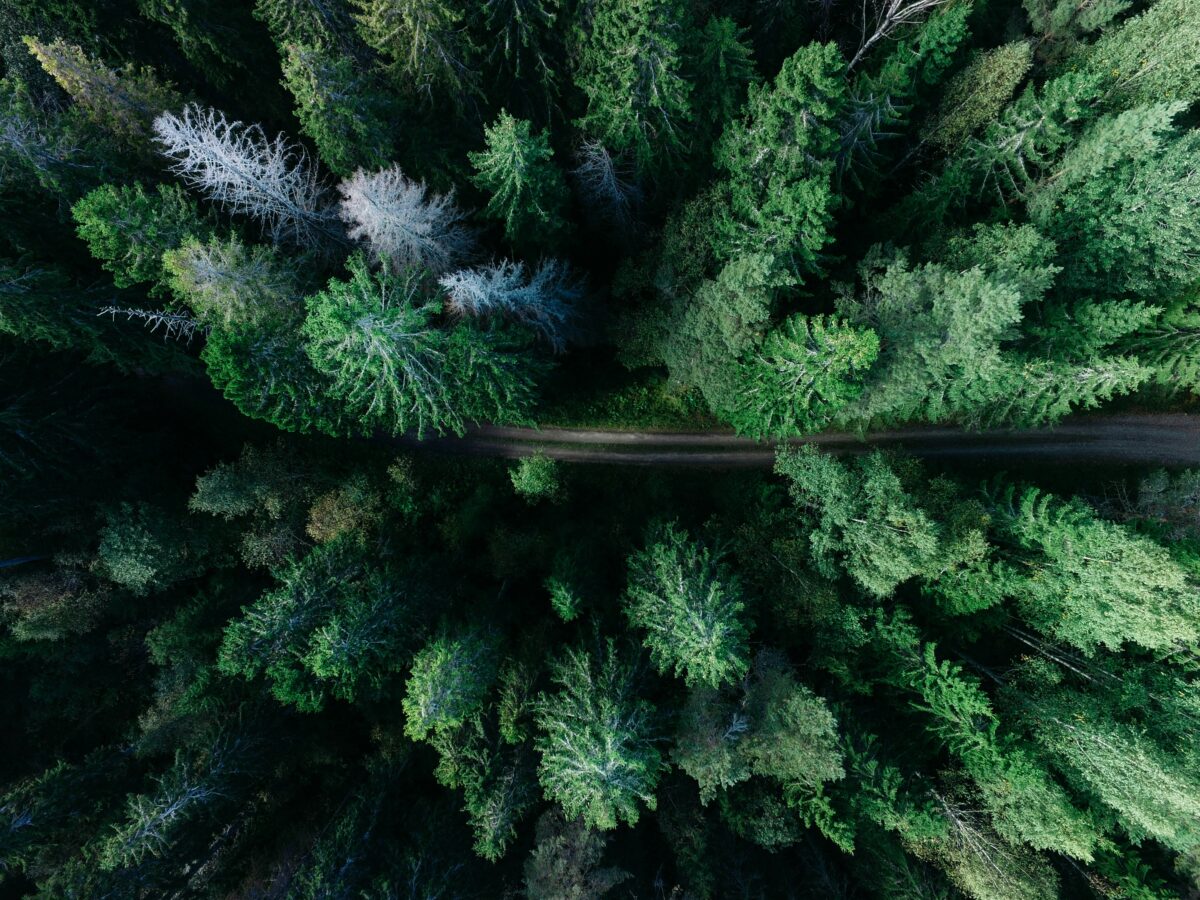With new tree planting initiatives popping up across the world using slogans like “We Plant a Tree Each Time You Swipe Your Card” and “Every Shirt Sold Plants 12 Trees!”, the world seems to have settled on one form of carbon sequestration (the removal of carbon dioxide from the atmosphere). But this reforestation craze often overlooks the trees that have been around for hundreds to thousands of years. Planting more trees is a simple form of carbon sequestration that many businesses have funded, but the strategy bypasses another important issue: the protection of old-growth forests.
Old-growth forests, such as the Tongass National Forest in Alaska or the Bialowieza Forest in Belarus and Poland, contain a variety of tree structures and ages— but most trees are at least 150 years old. The forests are usually marked by large canopy trees that spread over the top of the forest, with varying sized trees below, and downed dead trees on the forest floor. This structure makes for a diverse habitat that can support significant biodiversity. In comparison, younger forests, like the ones planted by tree-planting initiatives, tend to be more uniform in age and size, and therefore do not support as much biodiversity.
There are many other factors that make old-growth forests better for carbon sequestration than young forests. Old-growth forests have been sequestering carbon for thousands of years, and are able to store more carbon just by sheer age and size. While young growth forests have more trees per hectare and tend to take in carbon faster than older ones, they hold less than a quarter of the carbon that old-growth forests hold. Additionally, deforested trees have the potential to contribute carbon to the atmosphere, as the carbon that they have sequestered is released back into the atmosphere when they are cut down or burned. Old-growth forests have more carbon stored that could be released,but young forests are much more susceptible to wildfires, and thus are more likely to release their stored carbon.
Because of the sheer amount of carbon that old-growth forests already store, it is important to protect these forests and keep the carbon that they have stored out of the atmosphere. Old-growth forests face threats ranging from logging and development to climate change itself. Old-growth mortality rates have doubled throughout the Americas and Europe over the past four decades. This problem does not have an easy fix because these ecosystems take thousands of years to develop and decades to replace. Climate change is contributing to forest declines through increased natural disasters, higher temperatures, and increasing numbers of insects, fungi, and choking vines. The increase in natural disasters damages old-growth forests, and higher temperatures decrease growth rates and lead to increased wildfires and mortality.
While climate change is a relatively newer threat, issues with logging and development go all the way back to the settlement of the Americas. New England only has 0.2% of its forested land from when settlers first arrived. Logging accounts for 12% of the increased mortality rates that old-growth forests have experienced. Development pushes mortality even further as populations grow and more land is needed to support them. A few weeks ago, the Trump administration reversed the Roadless Rule to allow for logging and development in Tongass National Forest, one of the largest old-growth forests on the planet.
Because old-growth forests cannot simply be replaced once destroyed, it is vital to protect them. Forest management that centers on decreasing the impacts of climate change through brush clearing, controlled burns, or curtailing carbon emissions is needed. Additionally, policy solutions that protect more old-growth forests are needed. As Diane Vosick, David Ostergren, and Lucy Murfitt suggest in their paper on old-growth policy, some concrete actions that can be taken towards better policy include continuing education requirements for forest managers and developing forest plans with the goal of protecting and restoring forests. Their paper also calls for “right-to-burn” statutes in more states that would allow forest management to perform controlled burns in anticipation of forest fires, as is done on the west coast. Other policies could focus on restricting logging in these forests by expanding the forest area that is protected under federal law.
While planting new trees is a positive step towards an atmosphere with less carbon, this step will be canceled out if old-growth trees are simultaneously being destroyed. There are simple steps that can be taken by policymakers to protect these old forests, but companies and individuals must also act as well. Companies that perform tree planting campaigns could also put pressure on policymakers to protect old-growth forests. Individuals have the capacity to do the same by being engaged with politics and pressuring their representatives to consider this a priority. As environmentalists, policymakers, and companies build more sustainable practices, old-growth forests cannot be left behind.
Sources:
BCAncientForest. (2018, July 24). Old-Growth Forests vs. Second-Growth Plantations. Retrieved from https://www.youtube.com/watch?v=XIs0W0IQsos
BCAncientForest. (2018, October 10). What Will it Take to Save BC’s Old-Growth Forests? Retrieved from https://www.youtube.com/watch?v=6SINHjQX2B4
Fox, A. (2020, June 02). Forests Are Getting Shorter and Younger All Over the World. Retrieved from https://www.smithsonianmag.com/smart-news/forests-are-getting-shorter-and-younger-all-over-world-180975017/
HarvardMuseumNatHist. (2014, October 07). What are Old Growth Forests? Retrieved from https://www.youtube.com/watch?v=rTfv_Csbdzk
Jarvis, B. (n.d.). Why Old-Growth Trees Are Crucial to Fighting Climate Change. Retrieved from https://www.wired.com/story/trees-plants-nature-best-carbon-capture-technology-ever/
McDowell et al. (2020). Pervasive shifts in forest dynamics in a changing world. Science Magazine.
Noor, D. (2020, May 29). Trees are Getting Shorter and Younger. Retrieved from https://earther.gizmodo.com/trees-are-getting-shorter-and-younger-1843756792
O’Neill, M. (2020, May 31). Trees Are Getting Shorter, Younger – Changing Forest Conditions Started Decades Ago. Retrieved from https://scitechdaily.com/trees-are-getting-shorter-younger-trees-conditions-started-decades-ago/
Plant Your Change. (n.d.). Retrieved from https://www.plantyourchange.com/?utm_source=adwords&utm_medium=paids&utm_campaign=spendsave-11445459074&utm_content=e-a-0-0-kwd-22161094077 474763548462 112821884540&utm_term=0- planting trees}-b-0-null&gclid=Cj0KCQiAhZT9BRDmARIsAN2E-J2QCHeW3_rX1IFJ3tDkSo3vO6UKhWcS8cpsj7SLwWVCVZw_w5d0hwoaAjqVEALw_wcB
Save Lands plants 12 trees for each item sold. (n.d.). Retrieved from https://savelands.org/?gclid=Cj0KCQiAhZT9BRDmARIsAN2E-J36xYk9T6oUOKwvWotWRowV9kVvvTzgTjV5WEH4KQ-JOhorox78tLoaAsFrEALw_wcB
Vosick, D., D. M. Ostergren, and L. Murfitt. 2007. Old-growth policy. Ecology and Society 12(2): 19. [online] URL: http://www.ecologyandsociety.org/vol12/iss2/art19/
What is Old-growth forest?, Explain Old-growth forest, Define Old-growth forest. (2018, September 21). Retrieved from https://www.youtube.com/watch?v=NSEocBlgajY

